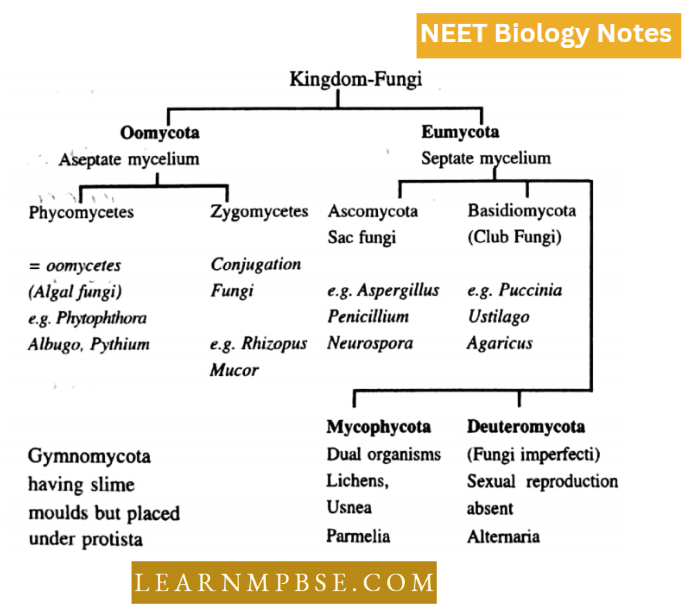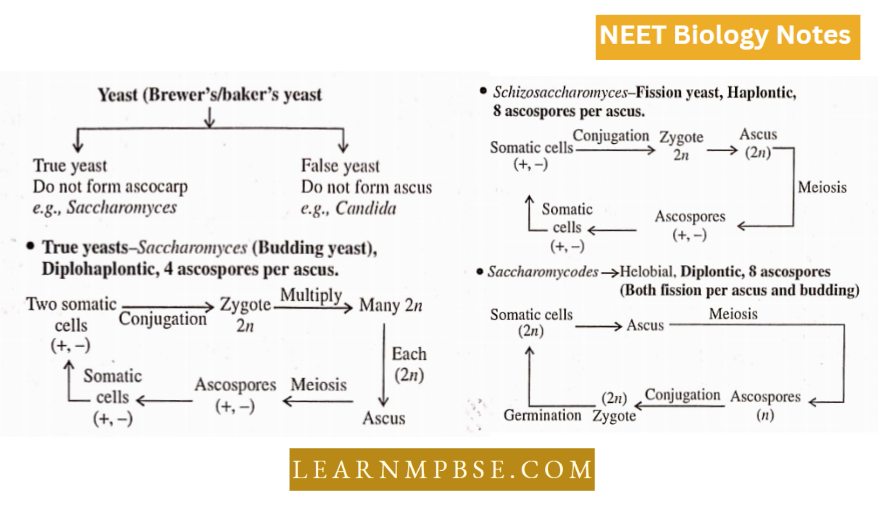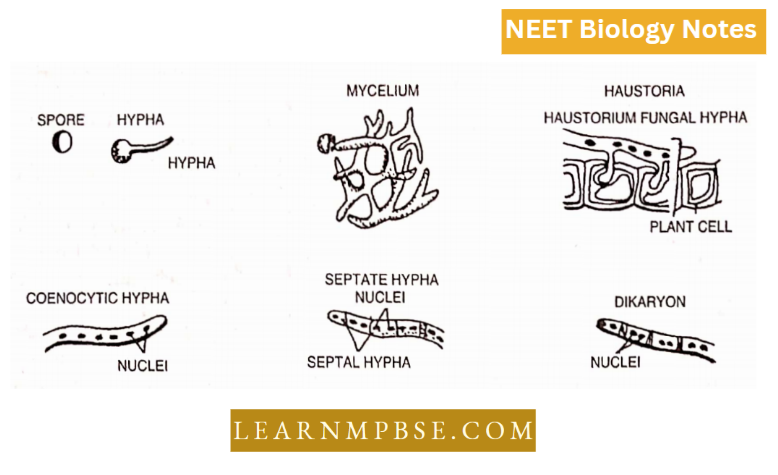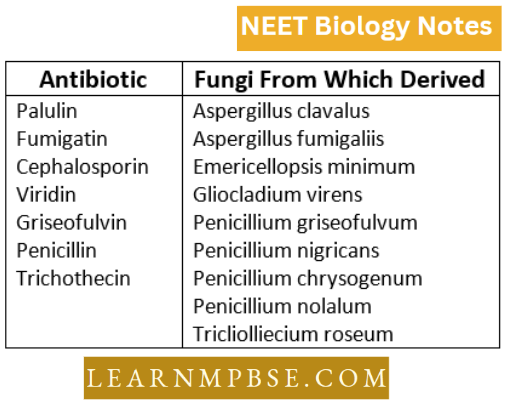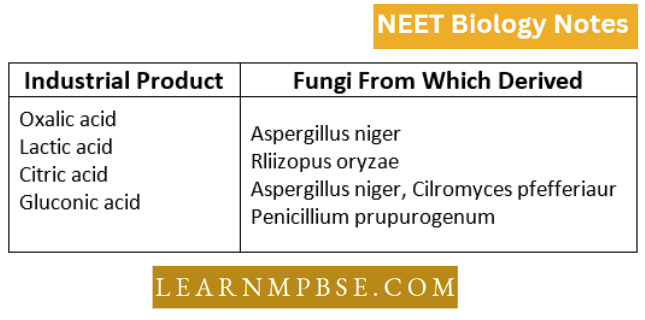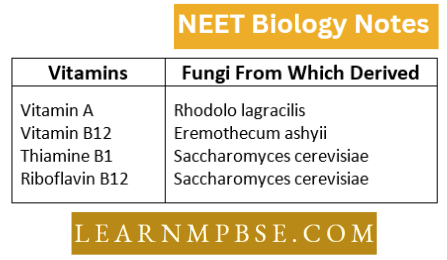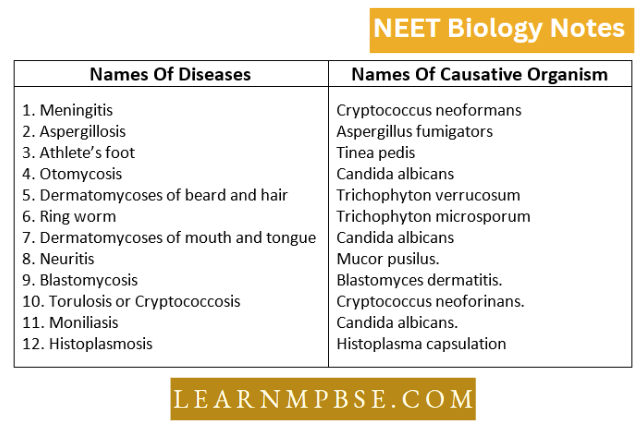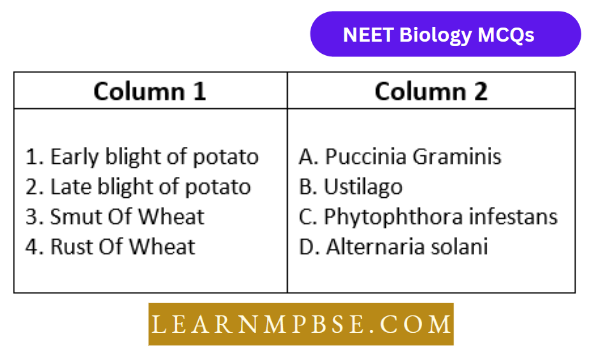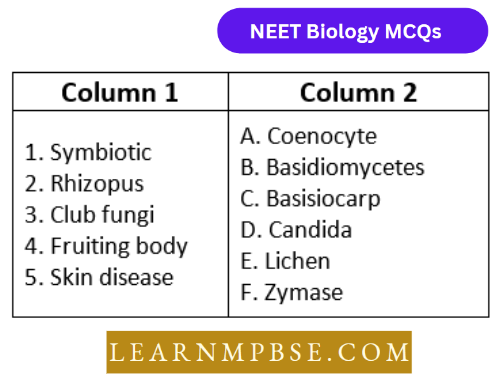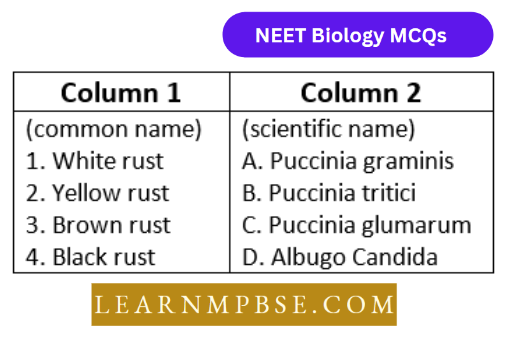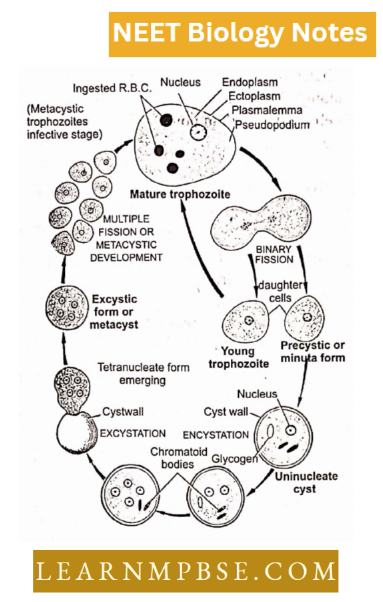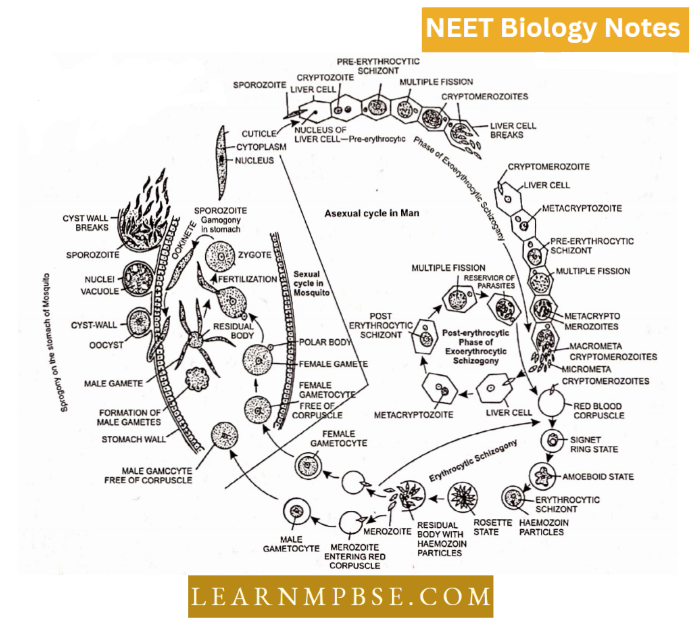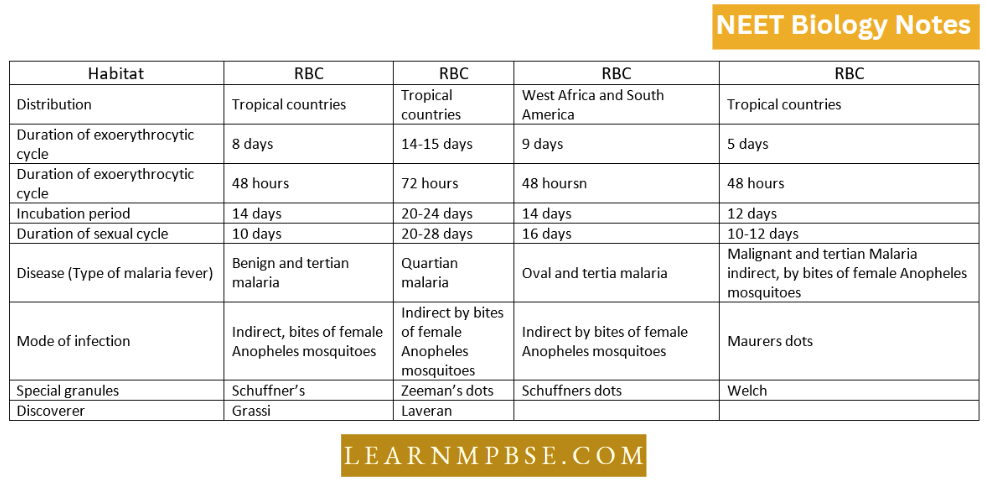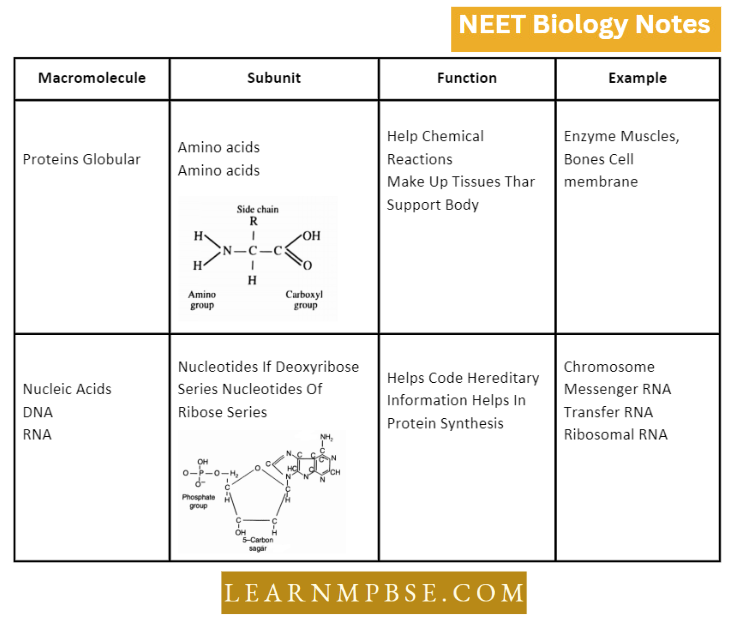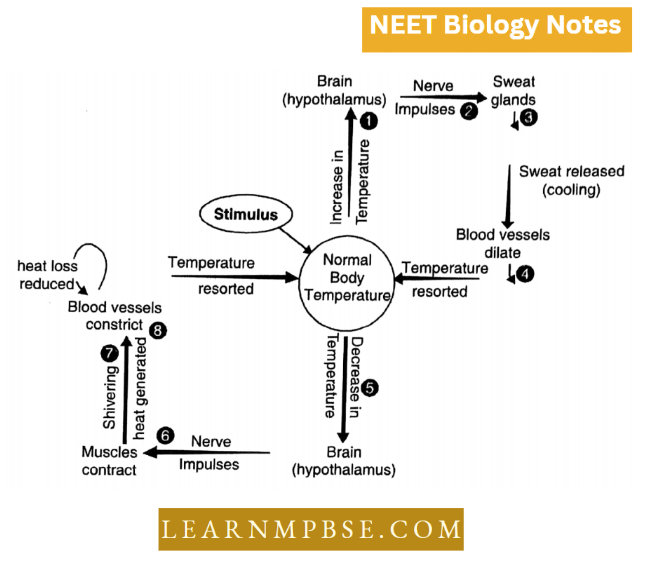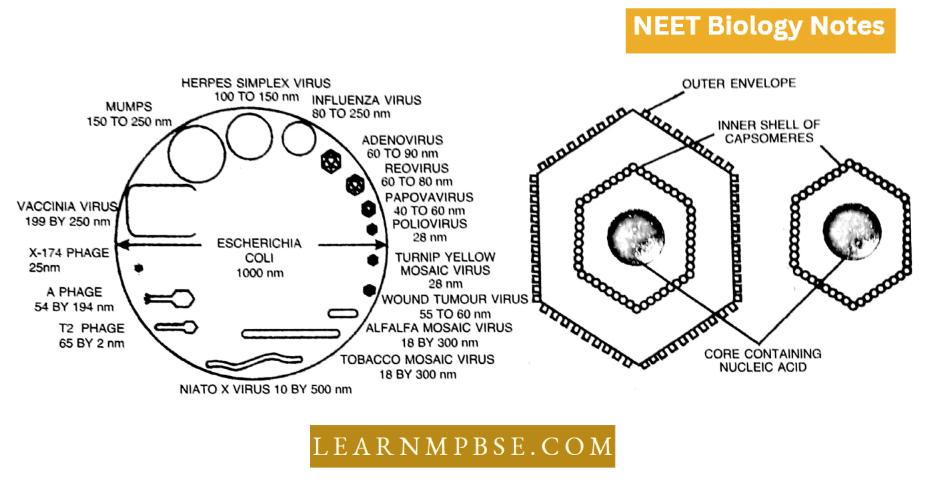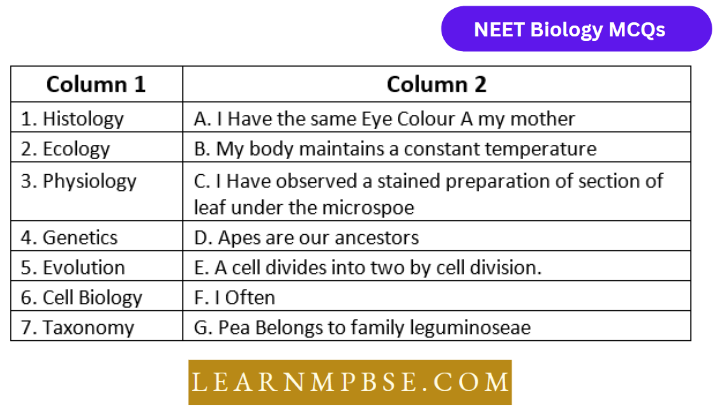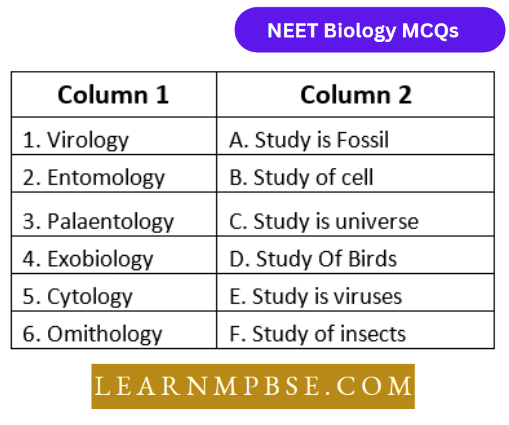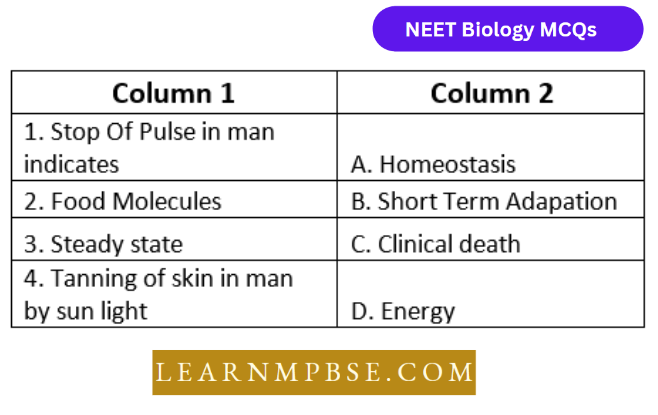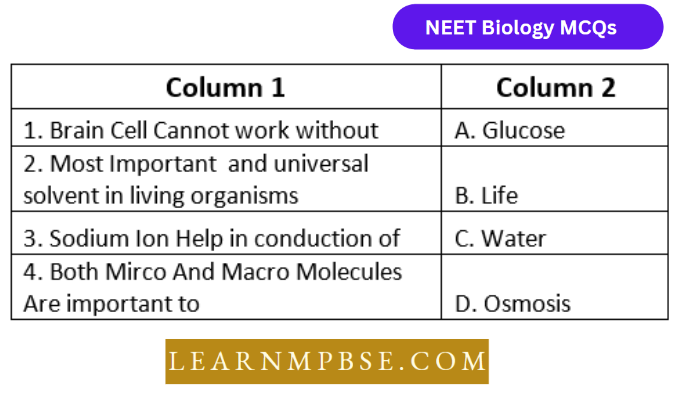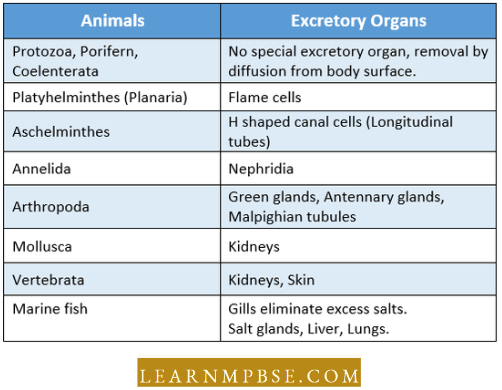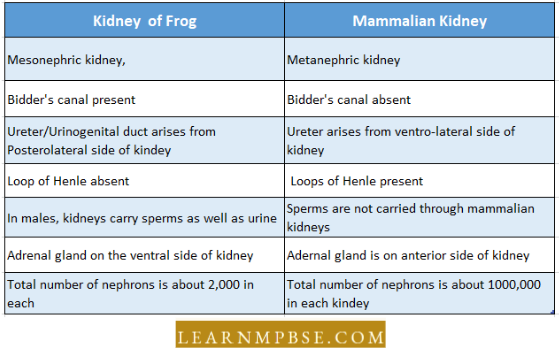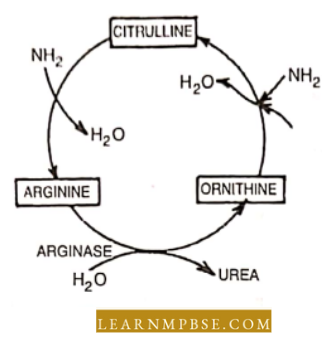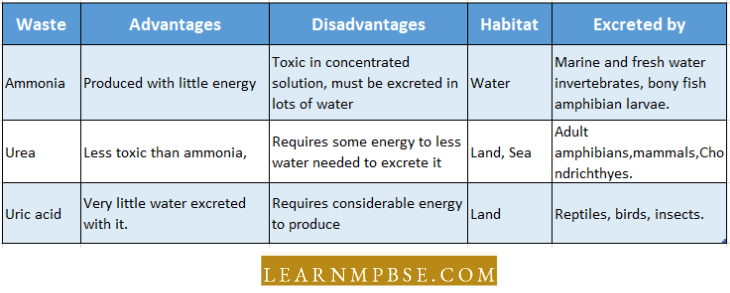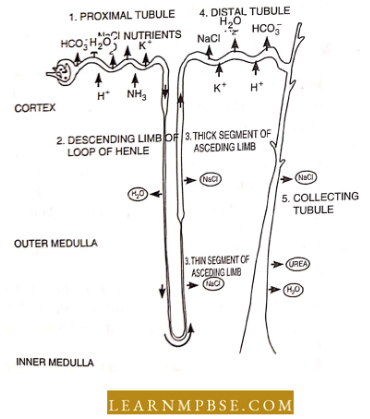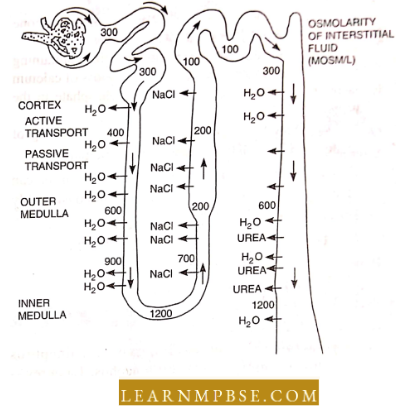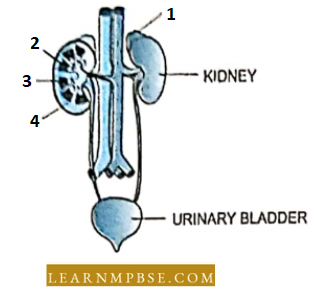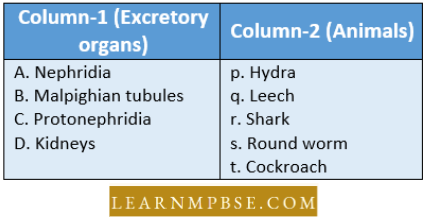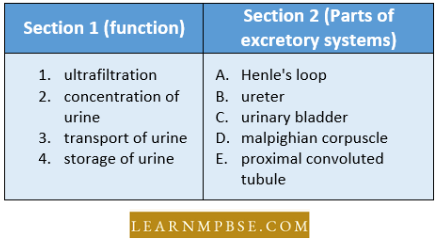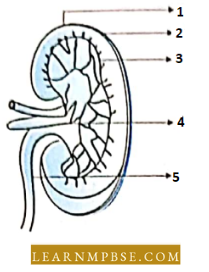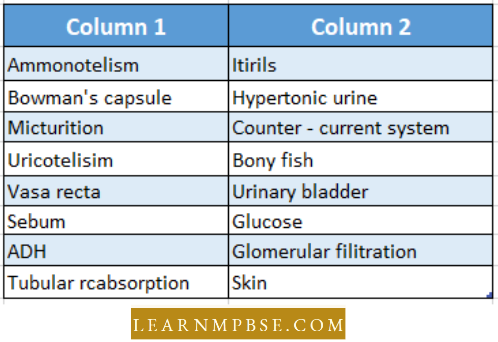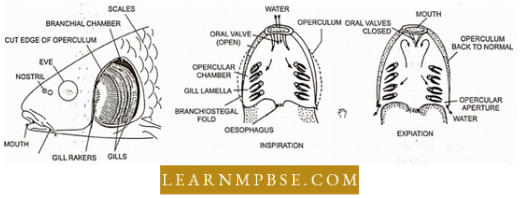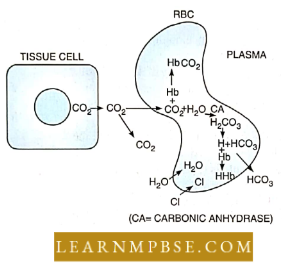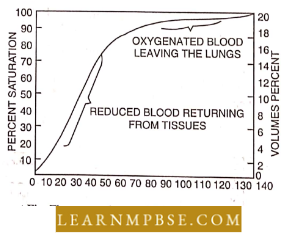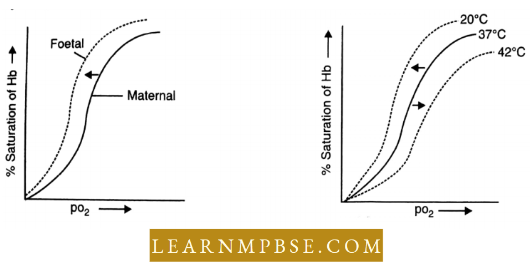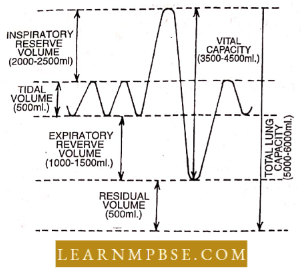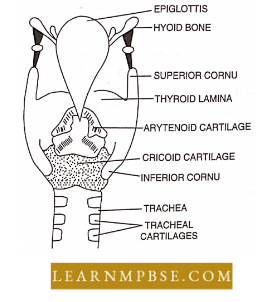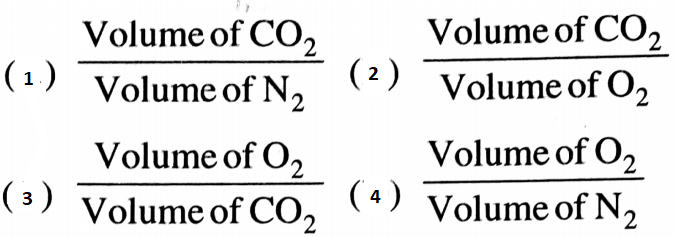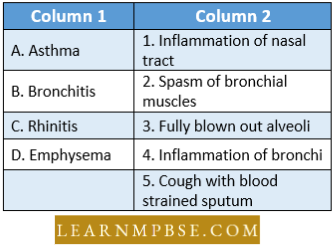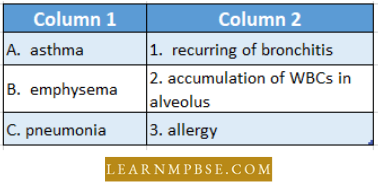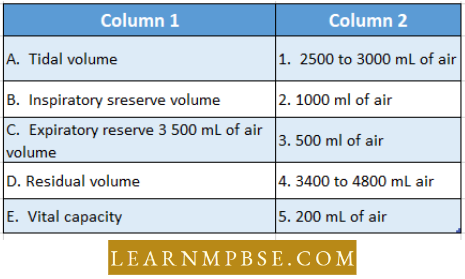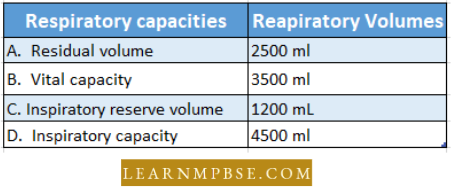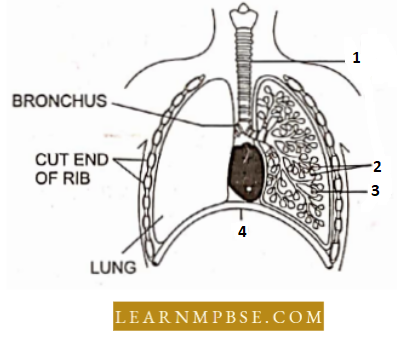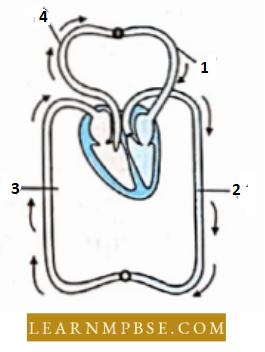NEET Biology Plant Kingdom Bryophyta Characters
Bryophyla Gk. Bryon = moss +pliyton = plants are also called “Amphibious plants or kingdom Plantae”.
Tlicse are liverworts, mosses, and hornworts which collectively constitute a group of vascular plants. About 25,000 species of liverworts and mosses are known.
- The plants represent two morphologically distinct generations i.e. gametophytic and sporophytic.
- The gametophytic phase is the dominant phase of the cycle and in general plant body term is used for this phase.
- The plant body in primitive forms like Riccia and Marchantia is thalloid but mosses like Funaria. it may be differentiated into rhizoids, stems, and leaves.
- The thalli of Riccia and Marchantia are attached to the substratum by unicellular, unbranched rhizoids, which may be smooth-walled or tuberculated but in mosses like Funaria, rhizoids are branched, multicellular, and obliquely septate.
- The plant body is made up of simple thin-walled parenchymatous cells. The xylem, phloem (vascular tissue), and mechanical tissue (sclerenchyma, etc.) are altogether lacking in bryophytes.
- Bryophytes are found in moist places due to the following reasons:
- In the absence of true roots, cells can absorb water directly from the ground or atmosphere.
- Biflagellate sperms of bryophytes need water for their movement to reach
the archegonium (female sex organ) for fertilization. - Mosses seldom reach heights. Funaria is 1-3 cm in height. They rarely grow more than 15 cm in height. The tallest species of Moss has been reported from New Zealand having a size of 60 cm.
- Vegetative propagation. They have a very good power of regeneration.
- Sexual reproduction. Bryophytes have evolved a life cycle that comprises two phases gametophyte (IN) and sporophyte (2N). The conspicuous stage in the life cycle is gametophyte which may be thallus, liver-like as in liverworts, or leafy as in mosses.
Read and Learn More NEET Biology Notes
Bryophyta NEET Notes
Vegetative reproduction occurs by:
- Progressive death and decay of thallus
- Adventitious buds
- Persistent apices
- Tubers
- Gemmae
- Bulbils
- Protonema
- At maturity, the gametophytes are nutritionally independent, while sporophytes are dependent upon as well as being permanently attached to gametophytes.
- Bryophytes reproduce vegetatively by tubers, gemmae, fragmentation, etc.
- The male sex organ is called the antheridium.
- Antheridium is made up of a mass of astrocytes enclosed by the sterile jacket.
- Each astrocyte gives rise to biflagellate sperms (male gamete).
- Sexual reproduction is of the oogamous type
- The female sex organ is called archegonium.
- Each archegonium is a multicellular flask-shaped structure. Its lower dilated, swollen part is called the venter and its slender, elongated upper part is called the neck.
- Sex organs antheridium and archegonium are multicellular and jacketed.
- The venter encloses the egg (female gamete) and venter canal cell. The neck encloses a row of neck canal cells.
- The syngamy (fertilization) takes place in water. The sperms swim in the water to reach the archegonium. One of the sperm fuses with an egg to form a diploid zygote.
- The zygote undergoes continuous divisions without undergoing any resting period
- The developing embryo is retained inside the center, where it finally develops into sporogonium.
- The sporophytes (sporogonia) are partially or completely dependent upon gametophytes.
- The sporogonium is usually differentiated into foot, seta, and capsule.
- In Riccia foot and seta are absent. The capsule is embedded in the thallus. In Riccia even the sex organs are found inside the thallus.
- In capsule, meiosis occurs in spore mother cells to form haploid spores.
- The spores are homosporous i.e. only of one type- the young gametophyte.
- Haploid spores, after dispersal from the capsule, may germinate either directly into gametophytic thallus (Riccia, Marchantia, or may form filamentous protonema which bears adventitious buds to give rise to leafy paint (gametophore)
Bryophyta NEET Study Material
Alternation of generations.
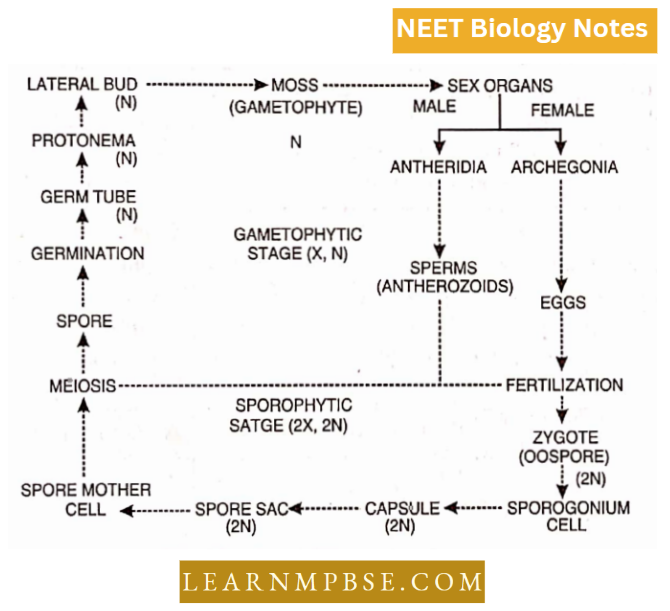
- Bryophytes exhibit a distinct and heteromorphic alternation of generations in which two phases gametophytic and sporophytic follow each other in regular sequences.
- The first phase is gametophyte which produces male and female gametes (i.e. antheridium and archegonium).
- The sporophyte phase starts immediately after fertilization of egg and sperm with the formation of a diploid zygote.
- The zygote forms a diploid multicellular sporogonium which is usually differentiated into foot, seta, and capsule (moss).
- Haploid spores are formed after meiosis. Thus spore is the first cell of the gametophytic generation.
- The spore germinates to give rise to the plant body (haploid) directly or after protonema formation.
- Because a gametophytic stage alternates with a sporophytic stage, a clear alternation of generations is present which is of a heteromorphic type
- Bryophytes are considered more advanced than green algae as they represent a multicellular sporophytic generation.
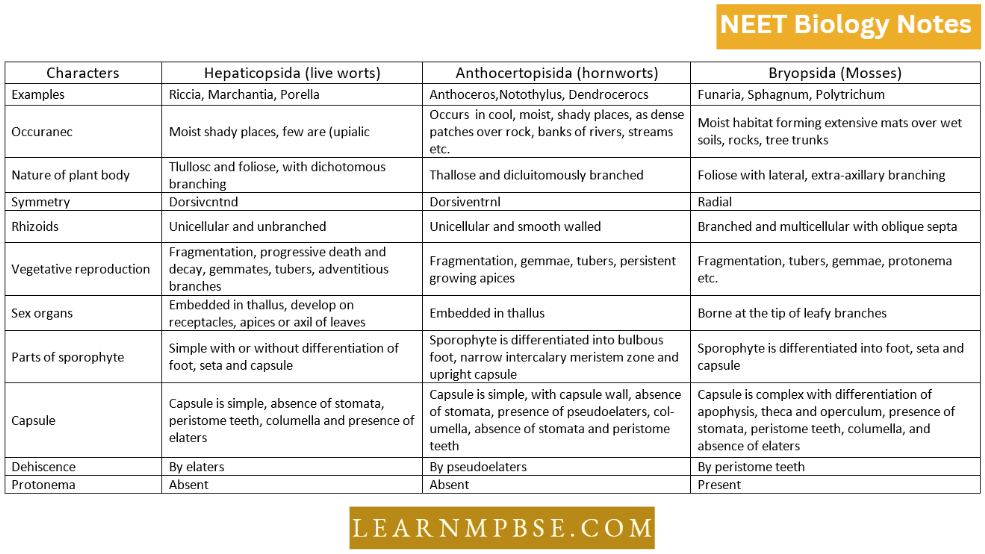
NEET Biology Plant Kingdom Bryophyta Funaria
It is a moss located in damp and shaded environments. The primary plant is part of the gametophytic generation, characterized by a leafy gametophore. It originates from the lateral bud of the protonema, which signifies the juvenile stage.
- The plant possesses rhizoids, cauloid stem-like structures, and phylloid leaf-like structures. Leaves are green and produce food through photosynthesis. The stem has inadequate branching, with lateral branches present.
- Vegetative reproduction occurs by the fragmentation of leafy gametophores, protonema, and secondary protonema, among other methods. The plant is monoecious, possessing male reproductive organs at the apex of the male branch and female reproductive organs at the apex of the female branch.
- The male branch tip is enveloped by peritoneal leaves and exhibits a rosette-like morphology. The female branch of Perichaetia exhibits leaves with a bud-like appearance; this aspect is unsightly, as both sexes are located on separate branches.
- Antheridia are club-shaped and interspersed with green, unbranched filamentous filaments known as paraphysis.
- A single antheridium produces a substantial quantity of motile, biflagellate, curved-body antherozoids.
- Archegonia are flask-shaped formations. They also alternate with paraphyses that possess the same structure and function.
- A solitary archegonium possesses a contorted neck, comprising 6-10 neck canal cells, a distended venter containing a single oosphere, and a venter canal cell.
- Antherozoids navigate through the water to reach the archegonium, guided chemotactically by sucrose, enter the neck, and fuse their nucleus with the oosphere to form an oospore (2N).
Bryophyta NEET Question Bank
Oospore divides mitotically to produce sporogonium having foot, seta, and capsule. 1 Capsule has apophysis, theca, and operculum.
- Sporogonium has green cells so it is partially Aa—1 dependent on the gametophyte.
- The spore sac in theca part has spore mother cells (2N) which by meiosis produce haploid spores. The peristome (32 teeth in two whorls) helps in spore liberation.
- A single spore on a suitable substratum produces primary protonema.
- Thus in the life cycle of Funaria, there are two distinct generations. One of these is a haploid independent leafy moss plant, the other is a diploid sporophyte.
- The two alternate with each other, it is called heteromorphic Alternation of Generations and the life cycle is diplohaplontic.
Liver worts
- The protonema stage is absent.
- Vascular tissues as well as conducting tissues are absent.
- Liverworts have unicellular rhizoids instead of roots.
- The plant body of liverworts shows dichotomous branching.
- The plant body possesses scales or amphigastria for retaining moisture and protection.
- Capsule possesses elaters for dehiscence.
- The capsule is devoid of any assimilatory tissue, columella, and peristome.
- The capsule is the fertile part of sporogonium
- Sporogonium may or may not show distinction into the foot, seta, and capsule
Mosses
- They possess a juvenile filamentous stage called protonema.
- Multicellular rhizoids are present instead of roots.
- Sporogonium is differentiated into foot, seta, and capsule.
- Capsule has abundant assimilatory tissue and columella.
- Capsule produces haploid spores.
- In mosses elaters are absent.
- Moss plant develops on protonema as buds.
- Moss leaves [phylloids] may have non-vascular midribs.
Economic importance
The peat deposits of Sphagnum, an aquatic moss, are harvested in blocks, desiccated, and utilized as fuel due to their exceptional absorptive capabilities and antiseptic attributes.
- Sphagnum is utilized for wound dressing. Sphagnum, owing to its water-retention capacity, is utilized for packaging plants and cut flowers destined for distant locations.
- Gardeners utilize this moss for vegetative proliferation during layering and similar techniques. Peat holds significant value for agriculturalists. Its incorporation into clayey soils enhances the soil’s texture.
- Peattar, ammonia, and paraffin are some of the byproducts of peat. It is an excellent soil enhancer, it occupies ponds, pools, etc., and ultimately, due to its rampant proliferation, they get filled.
- The debris is progressively transformed into solid earth. Sphagnum in the pools resembles soil and is therefore referred to as quaking bogs.
- Bryophytes have a significant role in soil erosion prevention. The expansive carpets or mats they create stabilize the soil, so preventing erosion.
- Function in ecological succession. The Moss stage is the second phase of biological succession on bare rock, gradually transforming the rock substrate into rich soil.
- Wetlands. Sphagnum peat mosses proliferate swiftly in shallow waterways, creating dense mats on the water’s surface. They provide a deceptive semblance of solidity, resulting in the drowning of both animals and humans.
- Cuisine. Mosses serve as sustenance for several small creatures. Certain avian species, such as GrouseChicken, consume the capsules of Bryum and Polytrichum.
Apophysis It is a sterile and photosynthetic lower part of the capsule. Paraphysis are sterile structures present in archegonia and antheridia Analogous structures are those which are functionally similar but genetically different.
- The leaves and stem of Funaria are functionally similar to the leaves and stem of angiosperms but genetically different.
- Perichaetial leaves whorl of leaves surrounding archegonia.
- Perigonial leaves. A whorl of leaves surrounding antheridia.
- Homosporous. Morphological meiospores in bryophytes are of one kind. This condition is called Homosporous.
- Heteromorphic alternation of generations. When the gametophyte and the sporophyte of the same plant are completely different in size and shape, that is called heteromorphic alternation of generations or heterologous type of alternation of generations.
- Columella is a sterile structure present in the capsule of Funaria surrounded by a spore sac in theca region.
- Cauloid and PhyllokL The stem and leaf-life organs of bryophytes are generally called as cauloid and phylloid respectively as there is the complete absence of vascular tissue and these are gametophytic structures. ChJorenema or Caulanema. The colored branches of protonema are called chlorine or caulanema Cauloid. Stem-like structure of moss is called cauloid.
Bryophyta NEET Question Bank
NEET Biology Plant Kingdom Bryophyta Quanta To Memory
- In the Bryophyte’s life cycle, the dominant phase is a gametophyte because the main plant body is gametophytic and dominant.
- In Bryophytes meiosis occurs in diploid spore mother cells.
- A goldmine of liverworts is in the western Himalayas.
- True mosses Funaria (cord moss),Sphagnum (Peat or Bog or Turf mosses) Polytrichum (Hair cap moss) Pogonatum (Maiden hair moss) Tortula (Twisted moss).
- Fossil bryophytes have been recorded from tertiary beds in the Cenozoic era Example Mucorales, and Jungermanniales.
- Outer, larger peristome teeth are hygroscopic in nature and inner, smaller are non-hygroscopic.
- Elaters are hygroscopic because of peculiar thickening and their movements loosen the spore masses which are discharged and dispersed by air.
- Sphagnum is commonly called bog moss peat moss or turf moss as it can convert into bogs because of its creeping nature.
- It is true moss. With this development the water of bogs becomes acidic (pH 3.7 or lower), followed by compression from plants on the top leading to the development of dark-colored peat which can be used as fuel on drying.
- The sporophytic stage of bryophytes is generally made up of foot, seta, and capsule and Ricca (a liverwort) has only capsule.
- Sphagonal used is for skin disorders extracted from Sphagnum.
- Elaters exhibit xerochasy.
- Funaria is also known as cord moss.
- A capsule of Marchantia forms about 3,000,000 spores.
- Pogonatum sporogonium is without apophysis.
- The flat roof of the columella is called the epiphragm.
- The central sterile column of the capsule is called the columella.
- Bryophytes are non-vascular plants with multicellular sex organs.
- An erect gametophyte of bryophyte is called a gametophore.
- Sterile hairs mixed with sex organs are called paraphyses.
- The most complete fossil among Bryophytes -Naiadita lanceolate
- Leaves of funaria are one cell thick In moss capsule peristome teeth are 32 and arranged in two rows.
- Synoicous—Bryophytes in which male and female sex organs are intermixed on the same plant.
- More stomata are present in apophysis, less in theca, and are absent in operculum.
- In bryophytes, rhizoids are mostly tuberculate and may be smooth, (eg. Riccia)
- In Funaria after fertilization the female branch becomes erect and the male branch is hence pushed to a side.
- In Hepaticeae the sex organs are embedded in thallus.
- Antheridia and archegonia are enclosed by multicellular sterile jackets.
- In T. S. the stem shows a continued strand in the center outside which lies the cortex.
- Outer layers of the cortex have chloroplast.
- Leaves of Funaria are sessile and are analogous to real leaves of higher plants.
- Rhizoids of Funaria are non-green and help in vegetative reproduction.
- Paraphysis are unbranched, green multicellular thread¬ structure intermixed with antheridia and archegonia.
- The paraphysis of the male branch is knobbed and the female branch is not pointed.
- Paraphysis prepares food and absorbs water for sex organs.
- The Epidermis of the apophysis of the capsule is provided with stomata.
- Capsule is a partial parasite on gametophytes. Hypodermis is 2 cells thick.
- Just below the lid or operculum, a perforate disc of thin-walled cells extends from the epidermis to the columella called as diaphragm.
Bryophyta NEET Mcqs
NEET Biology Plant Kingdom Bryophyta Questions From Competitive Examinations
Question 1. Female sex organs of bryophytes are called:
- Oogonia
- Ascogonia
- Archegonia
- Antheridia.
Answer: 3. Archegonia
Question 2. The term bryophyta was coined by:
- Iyengar
- Linnaeus
- Braun
- Bentham.
Answer: 3. Braun
Question 3. Apopliysis occurs in:
- Marchantia
- Pteridium
- Apocyanaceae
- Mosses.
Answer: 4. Mosses.
Question 4. Moss sporophyte does not possess:
- Flaters
- Seta
- Foot
- Columella.
Answer: 1. Flaters
Question 5. Thallus of riccia is :
- Haploid
- Diploid
- Triploid
- Tetraploid.
Answer: 1. Haploid
Bryophyta NEET Exam Preparation
Question 6. Bryophytes have :
- Archegonia
- Dominant gametophytic and parasitic sporophytic phases
- Thalloid plant body
- A11 the above.
Answer: 4. A11 the above.
Question 7. In funeral, calyptra is formed from :
- Capsule
- Archegonium
- Columella
- Antheridium.
Answer: 2. Archegonium
Question 8. In bryophytes, the adult plant body is :
- Epiphyte
- Sporophyte
- Gametophyte
- Sporophyll.
Answer: 3. Gametophyte
Question 9. Which of the following pair of plants is not a seed producer?
- Funaria and ficus
- Funaria and fern
- Puccinia and pinus
- Ficus and chlamydomonas.
Choose the wrong pair :
- Heapiicopsida – Marchantia
- Lycopsida – selaginella
- Bryopsida – anthoceros
- Pteropsida – dryopteris
- Sphenopsida – equisetum.
Answer: 2. Lycopsida – selaginella
Question 10. Archegoniophore is present in :
- Marchantia
- Chara
- Adiantum
- Funaria.
Answer: 3. Adiantum
Bryophyta NEET Exam Preparation
Question 11. Read the following statements and answer the question which follows them.
- In liverworts, mosses, and fems gametophytes are free-living
- Gymnosperms and some fems are hetero sperms and some fems are heterosporous
- Sexual reproduction is in focus, volvox and Albugo are oogamous
- The sporophyte in liverworts is more elaborate than that in mosses
- Both pinus and Marchantia are dioecious
Answer: 1. In liverworts, mosses, and fems gametophytes are free-living
Question 12. How many of the above statements are correct?
- Two
- Three
- Four
- One
Answer: 2. Three

